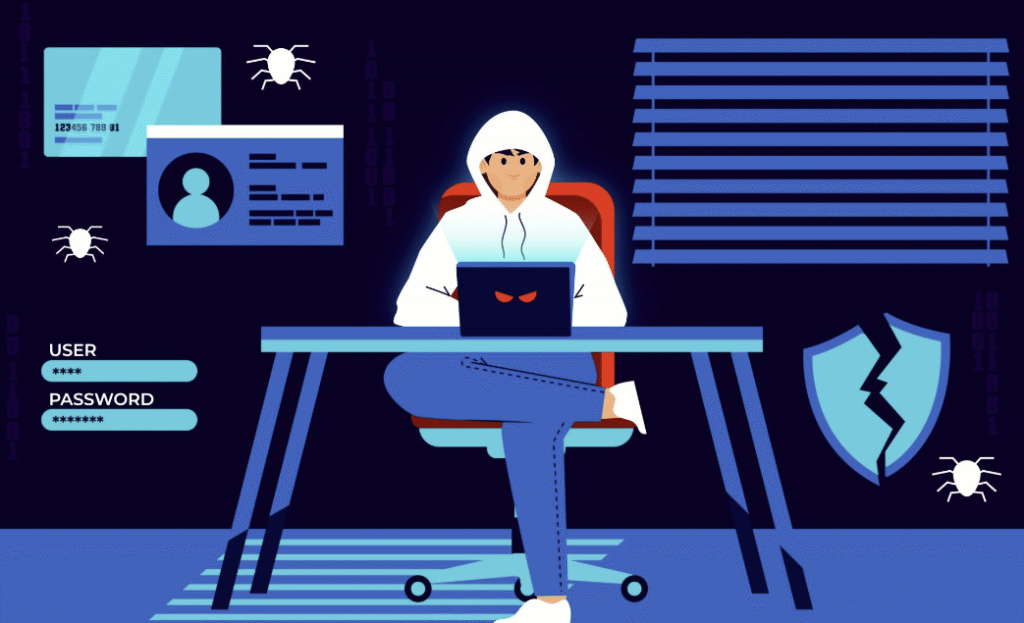
Status: Final Blueprint
Author: Shahab Al Yamin Chawdhury
Organization: Principal Architect & Consultant Group
Research Date: July 21, 2024
Location: Dhaka, Bangladesh
Version: 1.0
1.0 Executive Summary
- 1.1 Preamble: The shift to hybrid work models has expanded the corporate attack surface, making organizations more vulnerable to insider threats—threats originating from current or former employees, contractors, or partners. These threats, whether malicious, negligent, or accidental, can lead to catastrophic data breaches, financial loss, and reputational damage. This blueprint provides a comprehensive analysis of the insider threat landscape in hybrid environments, detailing risk factors, detection methodologies, and a robust mitigation framework.
- 1.2 Key Findings:
- Insider threat incidents have increased by 44% over the past two years, with costs per incident rising to an average of $15.38 million.
- Negligence is the most common cause of insider incidents (56%), often stemming from poor security hygiene exacerbated by remote work complexities.
- Malicious insiders are harder to detect and often cause more significant damage, driven by financial gain, espionage, or personal grievances.
- Hybrid work amplifies risks through the use of personal devices (BYOD), unsecured home networks, and reduced direct supervision.
- 1.3 Strategic Recommendation: Organizations must adopt a proactive, multi-layered security strategy centered on a Zero Trust architecture, continuous employee training, and advanced threat detection technologies like User and Entity Behavior Analytics (UEBA).
2.0 The Evolving Threat Landscape
- 2.1 Defining Insider Threats:
- 2.1.1 Malicious Insider: An individual who intentionally misuses their authorized access to steal data, disrupt operations, or commit fraud. Motivations: Financial gain, revenge, ideology, corporate espionage.
- 2.1.2 Negligent Insider: An employee who unintentionally causes a security incident through carelessness or failure to follow security policies. Examples: Falling for phishing scams, using weak passwords, misconfiguring cloud storage.
- 2.1.3 Accidental Insider: An employee who makes a simple error without malicious intent or negligence, such as sending a sensitive email to the wrong recipient.
- 2.2 Statistical Overview (Synthesized Data):
- Frequency by Type: Malicious (26%), Negligent (56%), Accidental (18%).
- Cost per Incident by Type: Malicious ($750,000 avg.), Negligent ($485,000 avg.).
- Time to Contain: Malicious (102 days avg.), Negligent (75 days avg.).
- Common Attack Vectors: Data Exfiltration (65%), Privilege Misuse (25%), System Sabotage (10%).
3.0 Amplified Risk Factors in Hybrid Environments
- 3.1 Technological Vulnerabilities:
- Unsecured Networks: Employees using personal, often poorly secured, Wi-Fi networks create direct entry points for external attackers to compromise credentials and pivot to corporate systems.
- Bring Your Own Device (BYOD): Personal devices lack enterprise-grade security controls, making them susceptible to malware and difficult to monitor or manage.
- Cloud Service Proliferation: Increased use of unsanctioned SaaS and cloud storage apps (Shadow IT) leads to data being stored outside of secure, monitored environments.
- 3.2 Human & Psychological Factors:
- Reduced Visibility & Supervision: Lack of direct, in-person oversight makes it harder to spot behavioral changes or risky practices.
- Employee Disengagement & Burnout: Remote workers may feel disconnected, leading to decreased loyalty and a higher likelihood of both negligence and malicious activity.
- Blurred Work-Life Boundaries: The use of company devices for personal activities (and vice-versa) increases the risk of accidental data exposure and malware infection.
- 3.3 Policy & Governance Gaps:
- Outdated Security Policies: Pre-pandemic security policies often fail to address the specific challenges of remote access, BYOD, and distributed data.
- Inconsistent Access Controls: Difficulty in applying consistent, principle-of-least-privilege access across diverse locations and devices.
4.0 Detection & Mitigation Framework
- 4.1 The Proactive Defense Cycle: A continuous, iterative approach to managing insider risk.
- Phase 1: Identify & Assess:
- Identify critical assets and data.
- Conduct regular risk assessments focused on insider threats.
- Define baseline user behavior profiles.
- Phase 2: Protect & Prevent:
- Implement a Zero Trust Architecture (ZTA).
- Enforce strong Identity and Access Management (IAM) and Multi-Factor Authentication (MFA).
- Provide continuous, context-aware security training for all employees.
- Deploy Data Loss Prevention (DLP) solutions.
- Phase 3: Detect & Analyze:
- Utilize User and Entity Behavior Analytics (UEBA) to detect anomalies from baseline behavior.
- Integrate Security Information and Event Management (SIEM) systems for centralized log monitoring.
- Monitor for high-risk activities: large data transfers, access attempts at odd hours, use of unauthorized USBs.
- Phase 4: Respond & Recover:
- Develop a clear Insider Threat Incident Response Plan.
- Establish protocols for revoking access and preserving evidence.
- Conduct post-incident analysis to refine controls and policies.
- Phase 1: Identify & Assess:
5.0 High-Profile Case Studies (Illustrative)
- 5.1 The Disgruntled Engineer (Malicious): A remote engineer, unhappy after being passed over for a promotion, used their VPN access to download and sell proprietary source code to a competitor over several weeks. Detection Failure: Lack of egress traffic monitoring and behavioral analytics.
- 5.2 The Phishing Victim (Negligent): A marketing employee working from a cafe clicked on a sophisticated phishing email on their personal laptop, compromising their credentials. Attackers used this access to launch a ransomware attack on the company’s shared network drives. Prevention Failure: Insufficient MFA enforcement and endpoint security on BYOD devices.
- 5.3 The Cloud Storage Leak (Accidental): A project manager accidentally configured a shared cloud folder containing sensitive client data to be publicly accessible while trying to share it with an external partner. The data was exposed for 48 hours before being discovered by a security scan. Policy Failure: Lack of clear policy and technical controls on cloud service configuration.
6.0 Conclusion & Future Outlook
- The hybrid work model is here to stay, and so are the associated insider risks. Legacy security models focused on perimeter defense are obsolete. The future of enterprise security lies in an identity-centric, data-aware approach that assumes threats can originate from anywhere, at any time. Organizations that invest in a robust Zero Trust framework, empower their employees with knowledge, and leverage AI-driven detection will be best positioned to thrive securely in this new era.